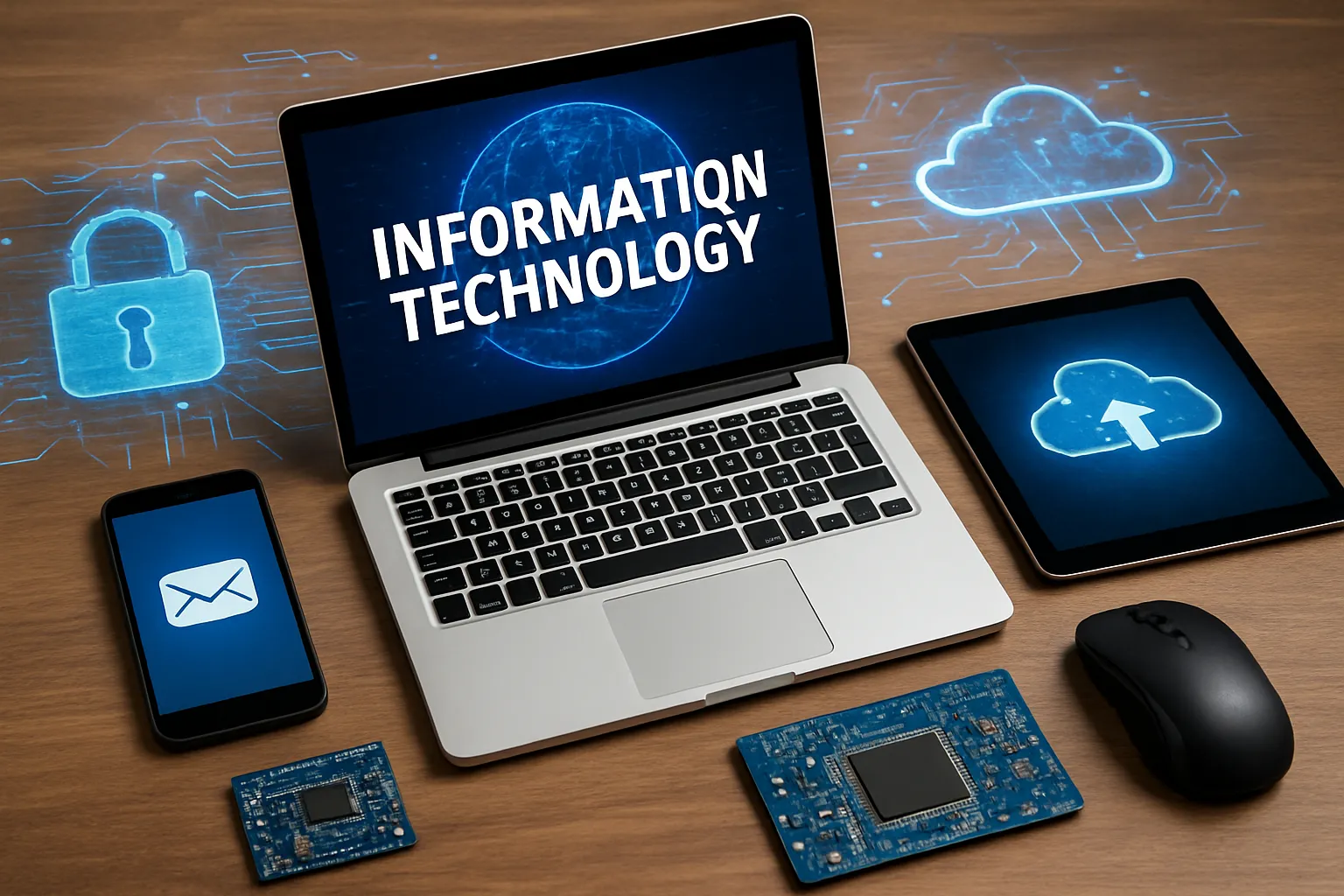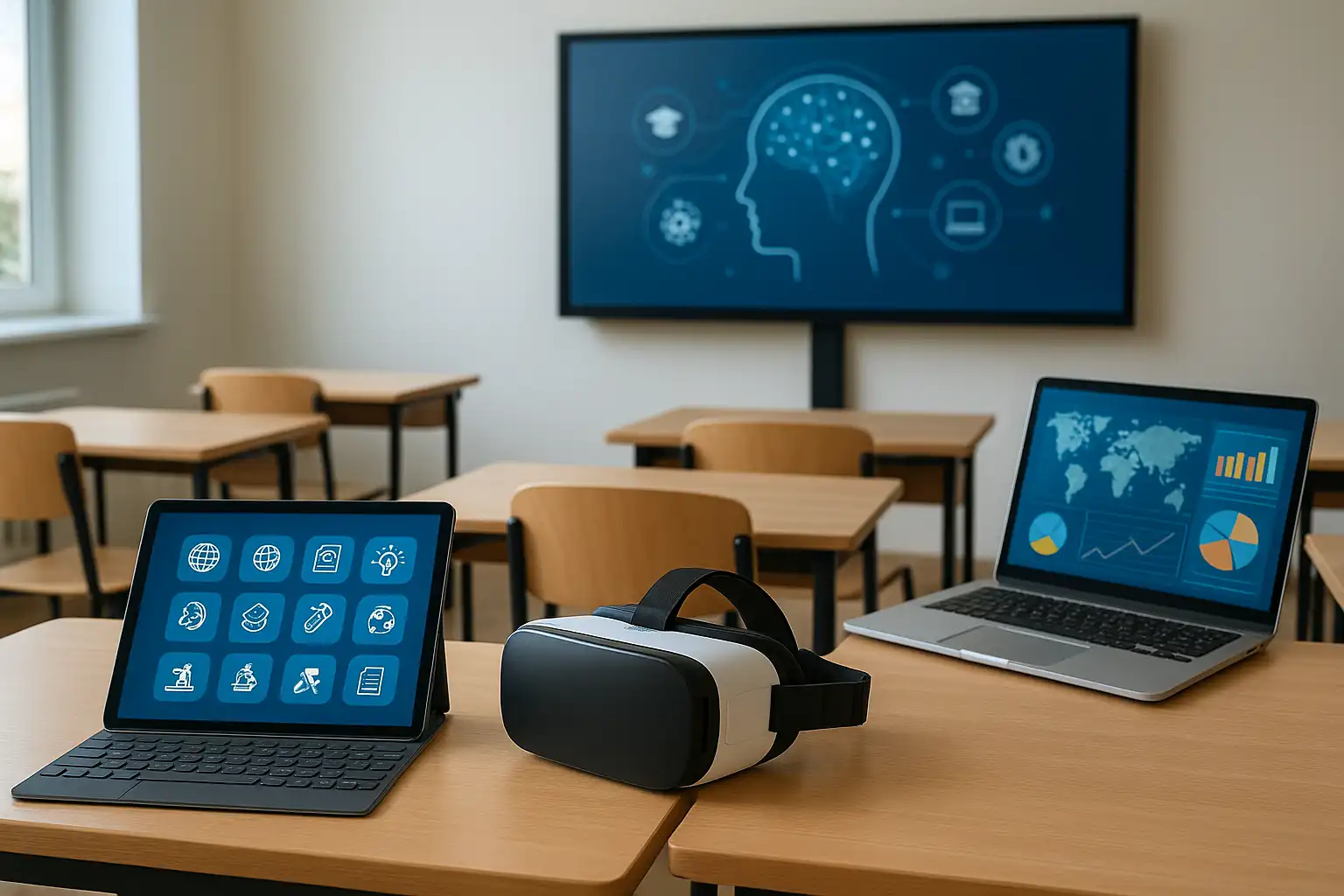In a world driven by data, information technology (IT) is at the heart of nearly everything we do. From checking email on your smartphone to managing massive cloud databases, IT shapes our everyday lives. But what is information technology, really? In this article, we will explore a clear, beginner-friendly definition of IT, how it works, real-world examples, the latest trends, and why it’s so important in today’s digital era of computer systems and connectivity.
What Is Information Technology (IT)?
Information Technology, often shortened to IT, refers to the use of computers, networks, software, and other digital infrastructure to process, store, transmit, and secure data. In simple terms, IT is all about leveraging computer systems and technology to turn raw data into useful information.
- Hardware: physical computer components, servers, data centers.
- Software: applications, operating systems, databases.
- Networks: local networks, the Internet, intranets.
- Data: collection, storage, retrieval, and analytics.
- Security: protecting information, preventing cyber threats.
Historically, the rise of information technology is closely tied to the Information Age, a period marked by the shift from traditional industry to a knowledge-based economy.
How Does Information Technology Work?
To understand how IT works, let’s break down a typical flow:
- Data Input: Information is generated (for example, via user input on a computer or IoT device).
- Processing: Software and computer systems analyze, compute, or transform this data.
- Storage: Processed data is stored in databases, hard drives, or cloud servers.
- Communication: Using networks (Internet, LAN), information is shared or transmitted.
- Security & Management: IT systems implement measures like encryption, firewalls, access control.
All these steps rely on computer infrastructure (hardware + software) working in tandem.
Key Components of Information Technology
Here are the main building blocks of IT:
- Computers: Desktops, laptops, servers — they run software and store data.
- Networks: Internet connectivity, local area networks (LAN), cloud networking.
- Databases: Systems that store structured data and allow retrieval.
- Applications: Software programs — from business apps to productivity tools.
- Security Systems: Cybersecurity tools, zero-trust frameworks, encryption.
- Emerging Technologies: AI, quantum computing, edge computing, Internet of Things (IoT).
Why Information Technology Matters
Information technology is foundational to modern society for several reasons:
- Business Efficiency: IT enables automation, faster decision-making, and better collaboration.
- Data Management: It helps organizations collect, store, and analyze massive amounts of data.
- Communication: Through IT, people stay connected via email, messaging, video calls, and social media.
- Innovation: New IT trends like generative AI, edge computing, and quantum computing drive innovation.
- Security: Protecting sensitive data is possible through advanced IT security systems.
- Sustainability: Green IT initiatives reduce energy consumption in data centers.
Real-World Applications of Information Technology
Here are some concrete examples:
- Enterprise Software: Companies use IT to run ERP (Enterprise Resource Planning) systems to manage finance, HR, and operations.
- Cloud Computing: Businesses host their apps and data on cloud servers rather than local computer hardware, making it scalable and cost-efficient.
- AI & Machine Learning: AI integrated into IT systems powers chatbots (like ChatGPT), recommendation engines, and predictive analytics.
- Internet of Things (IoT): Everyday computer-connected devices like smart thermostats, wearable health trackers, and industrial sensors send data to IT systems for real-time analysis.
- Cybersecurity: Zero-trust security models, firewalls, and encryption technologies are part of modern IT to defend against cyber-attacks.
- Quantum Computing Research: IT is evolving with quantum computing, promising faster problem-solving and powerful encryption.
Current & Emerging Trends in Information Technology
IT is not static; it’s evolving rapidly. Here are key trends shaping the future of information technology:
- Generative AI / Agentic AI
- AI adoption is fueling significant IT spending.
- Agentic AI (AI that can plan and act) is gaining ground in enterprise IT.
- Tools like ChatGPT and Gemini illustrate how AI is integrated into IT workflows.
- Quantum Computing
- Quantum computing is progressing from theory to practice.
- It holds promise for secure cryptography and large-scale optimization problems.
- Edge Computing
- Data is increasingly processed at the edge (closer to where it’s generated) rather than centralized in the cloud.
- This reduces latency and helps real-time applications (like autonomous devices).
- Sustainable / Green IT
- Organizations are investing in energy-efficient data centers.
- Eco-friendly hardware and software are increasing in demand.
- Zero-Trust Security
- Zero-trust models (never trust, always verify) are becoming standard in IT security.
- Continuous authentication and strict access controls help strengthen defense.
- Data Explosion & Storage
- We are deep in the “Zettabyte Era”: by 2025, global data generation is expected to reach ~175 zettabytes.
- This fuels the need for more advanced IT infrastructure like data centers and cloud storage.
Pros & Cons of Information Technology
Pros:
- Efficiency: Automates repetitive tasks, saving time and money.
- Scalability: IT systems can scale up or down easily (e.g., via cloud).
- Connectivity: Enables global communication and remote collaboration.
- Innovation: Supports new technologies like AI, IoT, and quantum computing.
- Data-Driven: Helps organizations make informed decisions using analytics.
Cons:
- Cost: Setting up and maintaining IT infrastructure can be expensive.
- Security Risks: Cyberattacks, data breaches, and vulnerabilities are constant threats.
- Complexity: Managing complex IT systems requires skilled professionals.
- Energy Use: Large data centers consume significant energy; sustainability is a challenge.
- Digital Divide: Not everyone has equal access to powerful IT resources.
How Information Technology Is Changing Business & Society
- Digital Transformation: Many businesses are undergoing digital transformation, rethinking processes around IT to become more agile.
- Remote Work: IT enables remote and hybrid work through cloud collaboration tools.
- Smart Cities: IoT + IT powers smart city applications—traffic management, energy optimization, public safety.
- Healthcare: IT supports telemedicine, electronic health records (EHR), and AI-powered diagnostics.
- Education: E-learning platforms, virtual classrooms, and AI tutoring systems leverage IT to make education more accessible.
Why Understanding IT Is Important for Everyone
Even if you’re not a tech professional, knowing what information technology is can benefit you:
- Career Awareness: IT is a growing field — from cloud computing to cybersecurity.
- Informed Decisions: As a consumer, understanding IT helps you make better tech choices (e.g., buying a computer, choosing a cloud service).
- Digital Literacy: In the digital age, every person interacts with IT — whether via smartphones, online banking, or social media.
- Entrepreneurship: Entrepreneurs can leverage IT to build scalable, data-driven businesses.
Conclusion
So, what is information technology? In essence, IT is the use of computers, networks, software, and data to process, manage, and secure information. It’s everywhere—from the smartphone in your hand to the cloud powering global businesses. Today’s IT landscape is shaped by powerful trends like generative AI, quantum computing, and edge computing. While information technology brings huge benefits — efficiency, innovation, connectivity — it also poses challenges, such as security risks and environmental impact. Understanding IT isn’t just for experts; it’s important for everyone navigating our digital world.
If you’re curious to dive deeper, explore specific areas like AI in IT, cloud infrastructure, or cybersecurity. The world of information technology is vast, constantly evolving, and full of opportunity.




